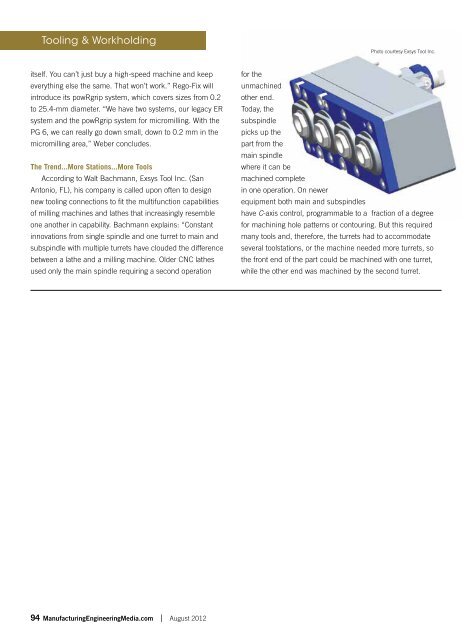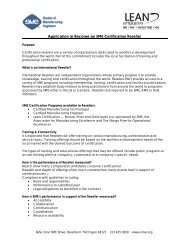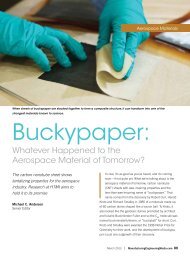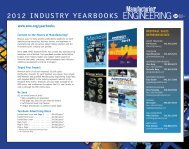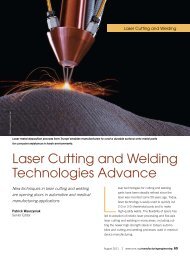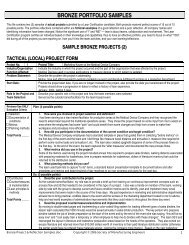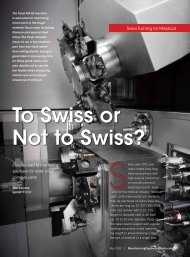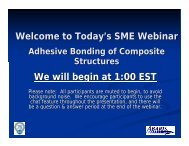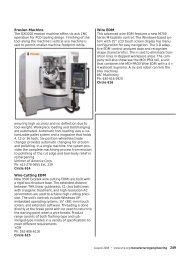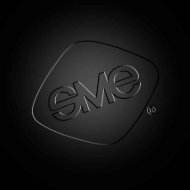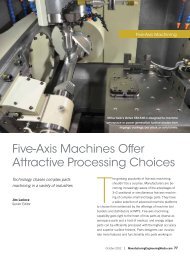Click here for PDF - Society of Manufacturing Engineers
Click here for PDF - Society of Manufacturing Engineers
Click here for PDF - Society of Manufacturing Engineers
Create successful ePaper yourself
Turn your PDF publications into a flip-book with our unique Google optimized e-Paper software.
Tooling & Workholding<br />
itself. You can’t just buy a high-speed machine and keep<br />
everything else the same. That won’t work.” Rego-Fix will<br />
introduce its powRgrip system, which covers sizes from 0.2<br />
to 25.4-mm diameter. “We have two systems, our legacy ER<br />
system and the powRgrip system <strong>for</strong> micromilling. With the<br />
PG 6, we can really go down small, down to 0.2 mm in the<br />
micromilling area,” Weber concludes.<br />
The Trend...More Stations...More Tools<br />
According to Walt Bachmann, Exsys Tool Inc. (San<br />
Antonio, FL), his company is called upon <strong>of</strong>ten to design<br />
new tooling connections to fit the multifunction capabilities<br />
<strong>of</strong> milling machines and lathes that increasingly resemble<br />
one another in capability. Bachmann explains: “Constant<br />
innovations from single spindle and one turret to main and<br />
subspindle with multiple turrets have clouded the difference<br />
between a lathe and a milling machine. Older CNC lathes<br />
used only the main spindle requiring a second operation<br />
94 <strong>Manufacturing</strong>EngineeringMedia.com | August 2012<br />
Photo courtesy Exsys Tool Inc.<br />
<strong>for</strong> the<br />
unmachined<br />
other end.<br />
Today, the<br />
subspindle<br />
picks up the<br />
part from the<br />
main spindle<br />
w<strong>here</strong> it can be<br />
machined complete<br />
in one operation. On newer<br />
equipment both main and subspindles<br />
have C-axis control, programmable to a fraction <strong>of</strong> a degree<br />
<strong>for</strong> machining hole patterns or contouring. But this required<br />
many tools and, t<strong>here</strong><strong>for</strong>e, the turrets had to accommodate<br />
several toolstations, or the machine needed more turrets, so<br />
the front end <strong>of</strong> the part could be machined with one turret,<br />
while the other end was machined by the second turret.


